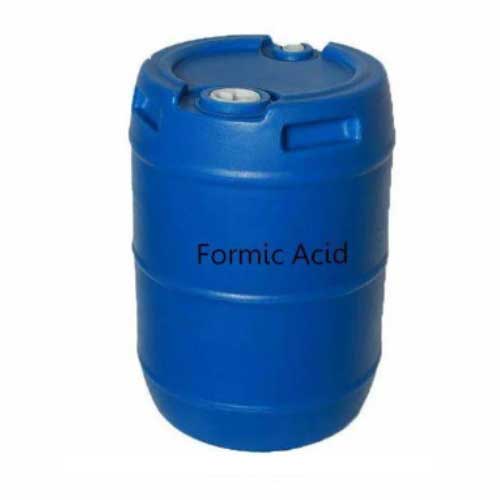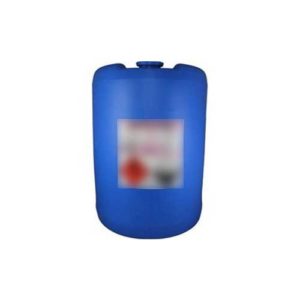FORMIC ACID (HCOOH)
ABOUT:
- Oxidation of Methanol: Formic acid can be produced by the oxidation of methanol in the presence of a catalyst, such as copper or silver. The reaction takes place in a reactor with air or oxygen as the oxidant. The resulting mixture is then purified by distillation and acidification.
- Carbonylation of Methanol: Another method to produce formic acid is through the carbonylation of methanol. In this process, carbon monoxide and methanol are reacted under high pressure and temperature in the presence of a catalyst, such as rhodium or iridium. The resulting mixture is then treated to isolate the formic acid.
- Hydrolysis of Methyl Formate: Methyl formate, an ester of formic acid, can be hydrolyzed to produce formic acid. This process involves reacting methyl formate with water in the presence of a catalyst, such as sulfuric acid. The resulting mixture is then purified by distillation and acidification.
PHYSICAL PROPERTIES:
Appearance: colorless, volatile liquid
Molecular weight: 46 g/mol
Density: 1.22 g/cm3 (20°C)
Boiling point: 100.8°C
Melting point: 8.4°C
Viscosity: 1.08 mPa·s (20°C)
Refractive index: 1.3715 (20°C)
pKa: 3.75
Flash point: 11°C
CHEMICAL PROPERTIES:
- Formic acid is a weak organic acid, with a pKa of around 3.75.
- It is highly soluble in water and most organic solvents.
- Formic acid can react with a variety of compounds, including bases, alcohols, and metals, to form formate salts or other products.
- It can be easily oxidized to carbon dioxide and water under certain conditions, such as in the presence of a strong oxidizing agent.
- Formic acid is toxic and can cause skin irritation, respiratory problems, and other health issues in high concentrations.
APPLICATIONS:
AGRICULTURE INDUSTRY:
- Formic acid can be used as a preservative in animal feed to prevent spoilage and maintain feed quality.
- Formic acid is commonly used in the production of silage, a fermented feed that is commonly used to feed livestock.
- Formic acid can be used to acidify soil to promote the growth of acid-loving crops, such as blueberries and cranberries.
TEXTILE & LEATHER INDUSTRY:
- Formic acid can be used as a reducing agent to help fix dyes onto fabrics during the dyeing process and used to adjust the pH of solutions.
- Formic acid is used in the initial stages of leather tanning to help remove hair and other unwanted substances from the hides.
MEDICAL INDUSTRY:
- For pH adjustment in the production of certain drugs and drug intermediates
- As a preservative in some drug formulations
- As a solvent in the extraction of some drugs from natural sources
RUBBER INDUSTRY:
- Formic acid is widely used in the rubber industry as a coagulating agent during the production of latex.
- The acid is added to the latex to coagulate the proteins and other impurities in the latex, making it easier to filter and purify.
FOOD INDUSTRY:
- Formic acid can be used as a preservative in canned fruits and vegetables to help prevent the growth of bacteria and other microorganisms that can cause spoilage.
- Formic acid can be used to preserve meat products by inhibiting the growth of bacteria that can cause spoilage and contamination.
SAFETY MEASURES:
- Wear appropriate personal protective equipment, including chemical-resistant gloves, goggles or a face shield, and a lab coat or protective clothing.
- Use a fume hood or work in a well-ventilated area to prevent the buildup of vapors.
- Store formic acid in a tightly sealed container in a cool, dry, well-ventilated area, away from heat sources, and incompatible materials.
- When handling formic acid, use a pipette, a burette, or a dropper to transfer it. Avoid pouring the acid from one container to another.
- In case of skin or eye contact, immediately flush with water for at least 15 minutes and seek medical attention. If inhaled, move to fresh air and seek medical attention. If ingested, do not induce vomiting and seek medical attention.
- Know the location of emergency equipment, such as an eyewash station and a safety shower, and have a spill kit on hand.





Reviews
There are no reviews yet.